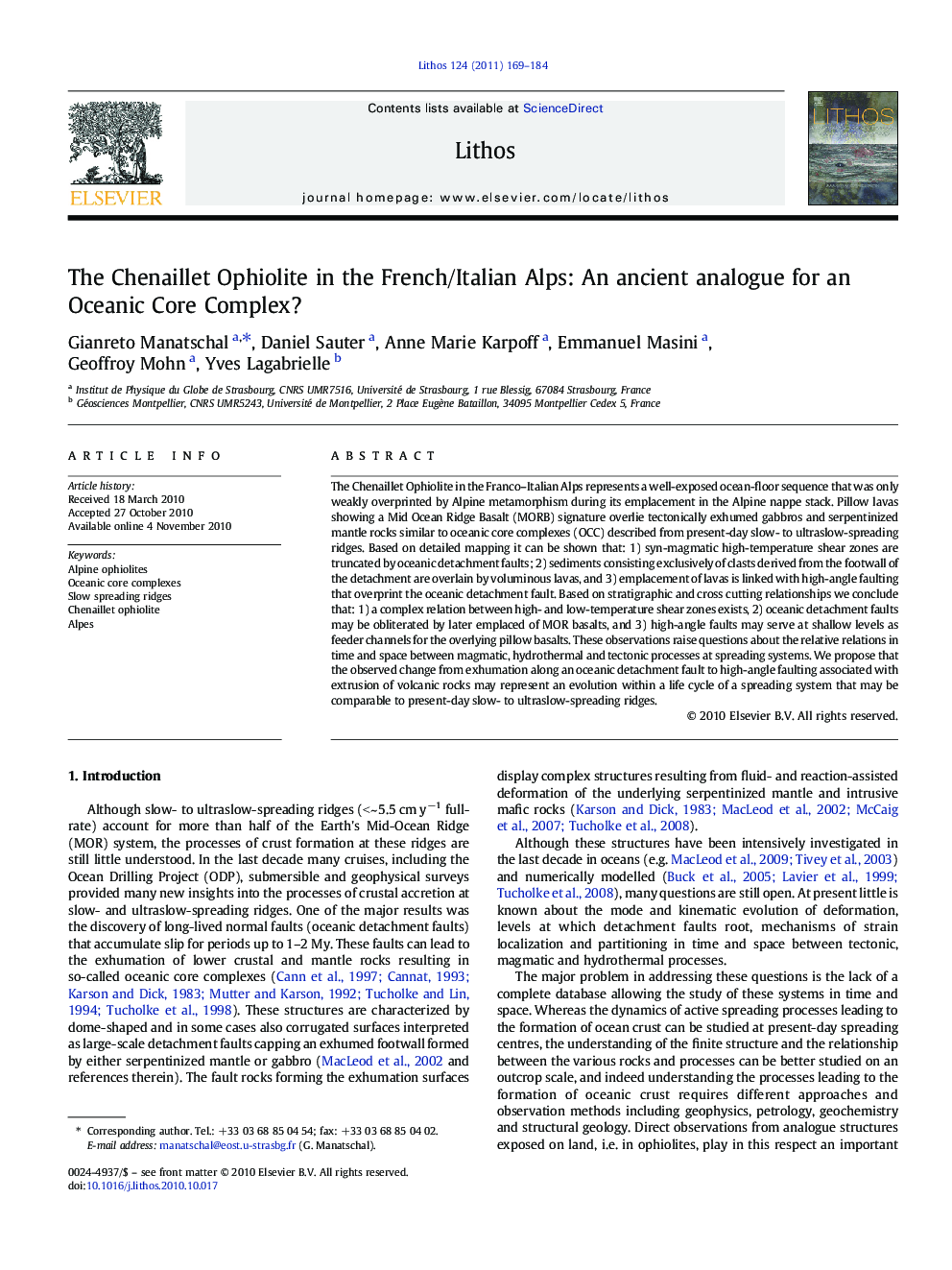| Article ID | Journal | Published Year | Pages | File Type |
|---|---|---|---|---|
| 4716760 | Lithos | 2011 | 16 Pages |
The Chenaillet Ophiolite in the Franco–Italian Alps represents a well-exposed ocean-floor sequence that was only weakly overprinted by Alpine metamorphism during its emplacement in the Alpine nappe stack. Pillow lavas showing a Mid Ocean Ridge Basalt (MORB) signature overlie tectonically exhumed gabbros and serpentinized mantle rocks similar to oceanic core complexes (OCC) described from present-day slow- to ultraslow-spreading ridges. Based on detailed mapping it can be shown that: 1) syn-magmatic high-temperature shear zones are truncated by oceanic detachment faults; 2) sediments consisting exclusively of clasts derived from the footwall of the detachment are overlain by voluminous lavas, and 3) emplacement of lavas is linked with high-angle faulting that overprint the oceanic detachment fault. Based on stratigraphic and cross cutting relationships we conclude that: 1) a complex relation between high- and low-temperature shear zones exists, 2) oceanic detachment faults may be obliterated by later emplaced of MOR basalts, and 3) high-angle faults may serve at shallow levels as feeder channels for the overlying pillow basalts. These observations raise questions about the relative relations in time and space between magmatic, hydrothermal and tectonic processes at spreading systems. We propose that the observed change from exhumation along an oceanic detachment fault to high-angle faulting associated with extrusion of volcanic rocks may represent an evolution within a life cycle of a spreading system that may be comparable to present-day slow- to ultraslow-spreading ridges.
Research highlights► Chenaillet Ophiolite in the Alps as an analogue for Oceanic Core Complex formation. ► Change between tectonic and magmatic dominated spreading. ► Interaction between oceanic detachment faults and syn-magmatic high-angle faults. ► High-angle faults may serve as feeder channels for pillow basalts. ► Chenaillet Ophiolite as a natural laboratory to study slow-spreading oceanic systems.
